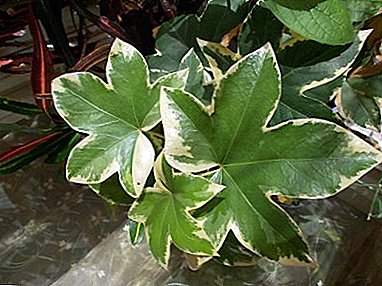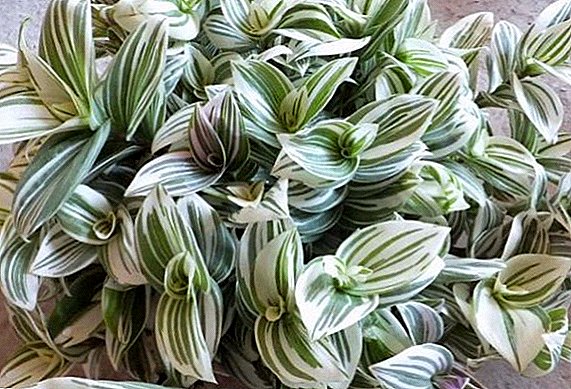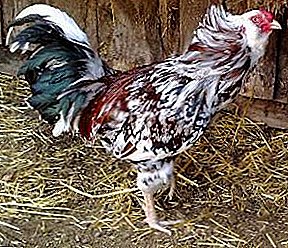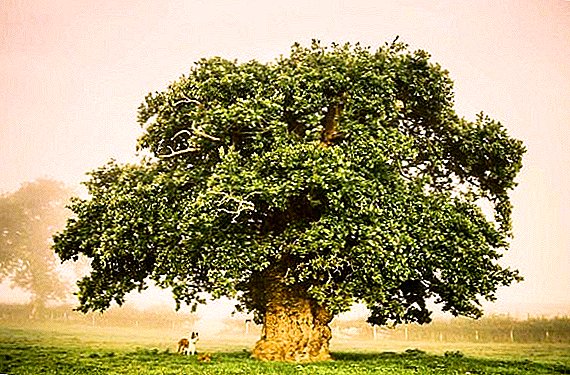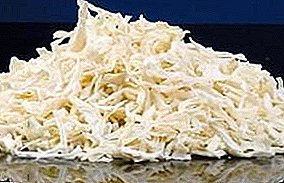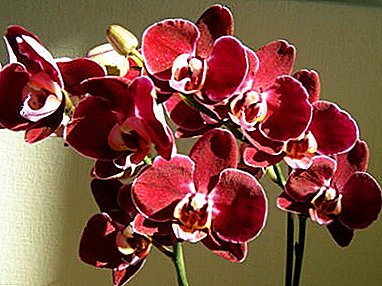
Orchid - the most beautiful flower, which fell in love with many gardeners. She is fascinating for its beauty and originality. Many are waiting with a sinking, when the plant begins to throw out the buds and bloom.
Proper care will keep the orchid bloom for a long time and make it lush and bright. The article will explain in detail how to behave in the flowering period of a beautiful orchid and after it.
What does flowering mean for a plant?
At the end of autumn, the flower begins the main period in his life - flowering. It is at this point that the orchid accumulates all its strength.
During the formation of the peduncle, the pet needs all the attention and care of the owner.consisting in regular watering, fertilizing, providing optimal lighting.
If the peduncle was not trimmed to the base last time, then there is a high probability that a kidney will wake on it in the fall and the process of growth of the side arrow will begin. Flowers, in that case, will appear earlier, already after 35-40 days.
Care before and during flowering - what's the difference?
 Care before spur - as long as the orchid does not bloom, you need to take good care of it so that it has the strength for long-term flowering:
Care before spur - as long as the orchid does not bloom, you need to take good care of it so that it has the strength for long-term flowering:- watering is necessary when the earth is dry enough;
- it is necessary to maintain optimum moisture and temperature conditions in the room;
- the lighting is diffuse but bright;
- the flower needs regular inspection for insects.
it is not recommended to go over the top dressing, as the plant will actively grow foliage and root system, but there will be almost no flowering.
- Care on the ejection of the peduncle. Let us examine how to care for an orchid during the ejection of the peduncle. It is practically no different from the usual. Also need light in sufficient quantities, moisture about 60%, the temperature of at least +22 degrees.
Fertilization, after the flower spike appeared, should be immediately renewed. Top dressing has a huge impact on the whole orchid and its bloom.
Step-by-step care instructions
Consider what to do next, after the orchid has already given a flower spike, because in the period when it released the arrow, you should take care of the flower very carefully.
- Choosing a place. When the plant has launched an arrow, a container with a flower is placed on the window sill, whose windows face either west or east. This is the most suitable place, because there are no hot rays and the light itself is enough. If it is possible to place an orchid only on the southern window-sill, then you will need to prune it.
- Temperature. A suitable temperature for a flowering plant is + 20 ... +25. At night there should not be sharp drops.
 Humidity. In the range of 60-70%. In the fall of this is not easy to achieve, because there is a cold season. The air is too dry. It is best to use a humidifier. From improvised means you can take a large container, fill it with water and put the pot there.
Humidity. In the range of 60-70%. In the fall of this is not easy to achieve, because there is a cold season. The air is too dry. It is best to use a humidifier. From improvised means you can take a large container, fill it with water and put the pot there.At the bottom of the pan should be pebbles or expanded clay, to evaporate the liquid. Experienced flower growers are advised to spray orchid with warm water, until 12 o'clock in the afternoon.
- Lighting. The light is bright and diffused. With the onset of a short daylight, additional lighting is required. If the flower feels its lack, it will instantly affect the appearance.
- Watering. Although the orchid also likes the soil to be wet, especially during flowering, but excessive watering can harm it. Increases the risk of rotting roots. When the flower is thrown out, watering is done once a week.
The ideal option for irrigation is to lower the container with the plant into the water, so the soil is completely saturated. After the remaining liquid is drained from the pot, it is put in its original place.
- Top dressing during flowering. It is made 1 time in 14 days. Special fertilizer complexes for orchids are purchased as fertilizers.
Problems and difficulties
- The orchid does not bloom. When growing a flower at home, often there are various problems: no flowering.
The orchid does not bloom due to improper watering:
- A pot filled with good drainage does not hold water for a long time, it will drain quickly. The earth is not saturated with moisture, which means that there is a shortage of fluid.
Having poor drainage and an overly intertwined root system, there is a rather big risk to catch the rot, which is formed as a result of waterlogging.
 Peduncle yellowed - perhaps he was not yet ready for artificially induced flowering, which gardeners sometimes make. If orchids staged various stresses, then all efforts were spent on releasing a flower arrow. In such a situation, it remains to remove the peduncle and give time to recover.
Peduncle yellowed - perhaps he was not yet ready for artificially induced flowering, which gardeners sometimes make. If orchids staged various stresses, then all efforts were spent on releasing a flower arrow. In such a situation, it remains to remove the peduncle and give time to recover.- Buds fall. There are several reasons for this - the lack of light or its excess, too close to the batteries, dry air, improper watering. To begin to deal with falling, first you need to find out exactly the essence of the problem, and then take urgent measures.
Poor plant care and consequences
- It so happens that the owner of a flower does not have enough time to take care of him properly.
- Also, it is not always possible to create ideal conditions for an orchid to throw out a flower stalk.
- Improper care can lead to the appearance of different types of parasites: the worm, spider mite, whitefly, thrips.
The most common diseases for poor orchid care are:
- Rot - This is a type of fungal disease. All affected areas are urgently removed and the slices are disinfected.The main reason for the formation of rot - a large amount of moisture at low temperature.
- Mealy dew. White bloom is a clear sign. A solution of colloidal sulfur or an agent called "Scor" will cope with the illness. The reason - the greenhouse effect.
- Fusarium - the foliage becomes soft, and the surface is covered with a bloom with a pink shade. It is possible to overcome the disease with the help of "Fundazol". Processed at least a week. Occurs due to high humidity.
- Spotted leaves. Dark and wet spots - a lot of fertilizer is applied. Help can only complete the removal of foliage, followed by treatment with a fungicide.
Orchid - an exotic flower that requires special attention. Proper care - guarantees regular and lush flowering, the absence of disease, healthy appearance of the plant.


 Care before spur - as long as the orchid does not bloom, you need to take good care of it so that it has the strength for long-term flowering:
Care before spur - as long as the orchid does not bloom, you need to take good care of it so that it has the strength for long-term flowering: Humidity. In the range of 60-70%. In the fall of this is not easy to achieve, because there is a cold season. The air is too dry. It is best to use a humidifier. From improvised means you can take a large container, fill it with water and put the pot there.
Humidity. In the range of 60-70%. In the fall of this is not easy to achieve, because there is a cold season. The air is too dry. It is best to use a humidifier. From improvised means you can take a large container, fill it with water and put the pot there. Peduncle yellowed - perhaps he was not yet ready for artificially induced flowering, which gardeners sometimes make. If orchids staged various stresses, then all efforts were spent on releasing a flower arrow. In such a situation, it remains to remove the peduncle and give time to recover.
Peduncle yellowed - perhaps he was not yet ready for artificially induced flowering, which gardeners sometimes make. If orchids staged various stresses, then all efforts were spent on releasing a flower arrow. In such a situation, it remains to remove the peduncle and give time to recover.